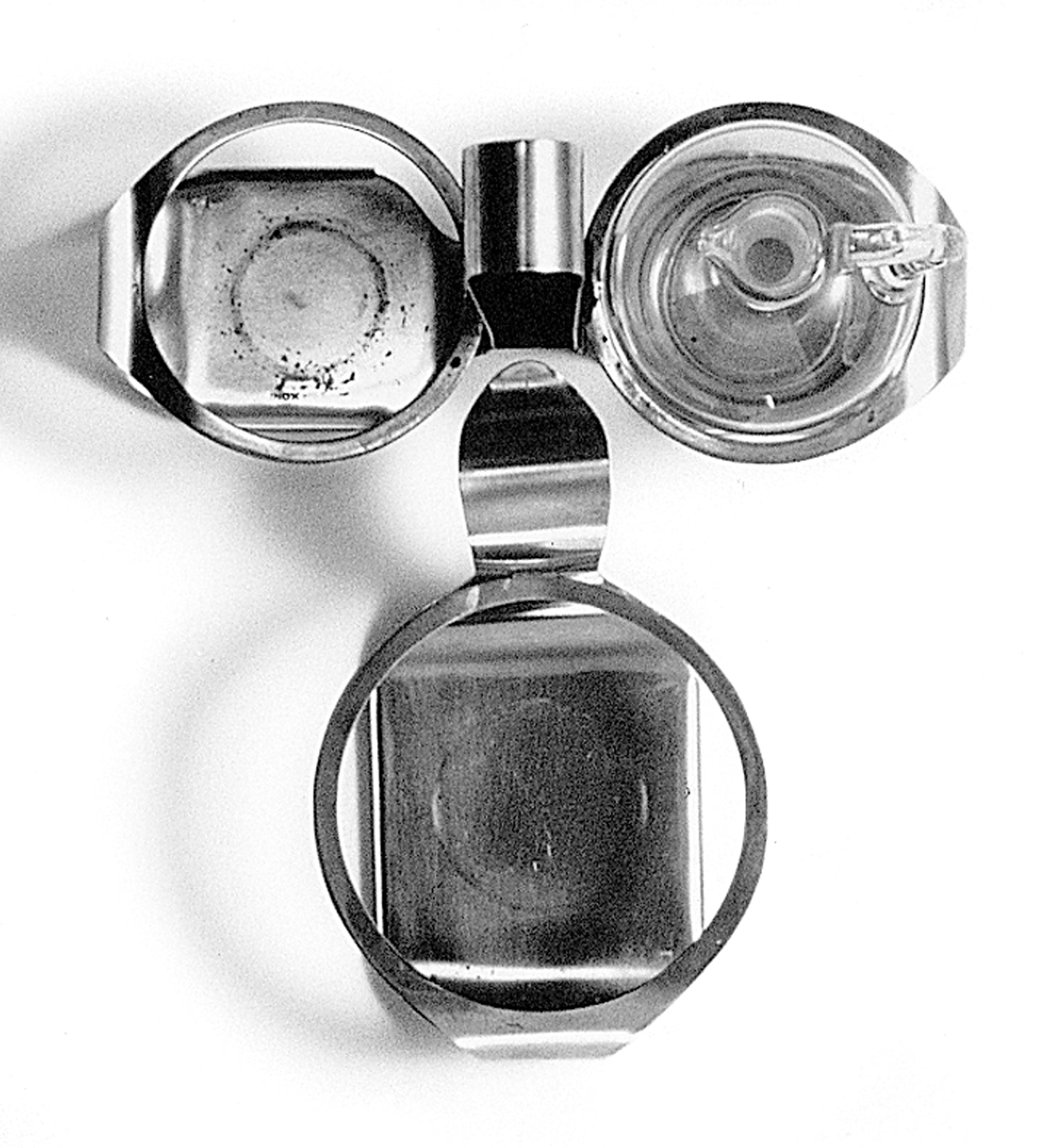
Storia
Una fabbrica del design italiano dal 1921
Esplora la storia e le origini di Alessi e scopri come sono nate le sue collaborazioni con i designer più interessanti.
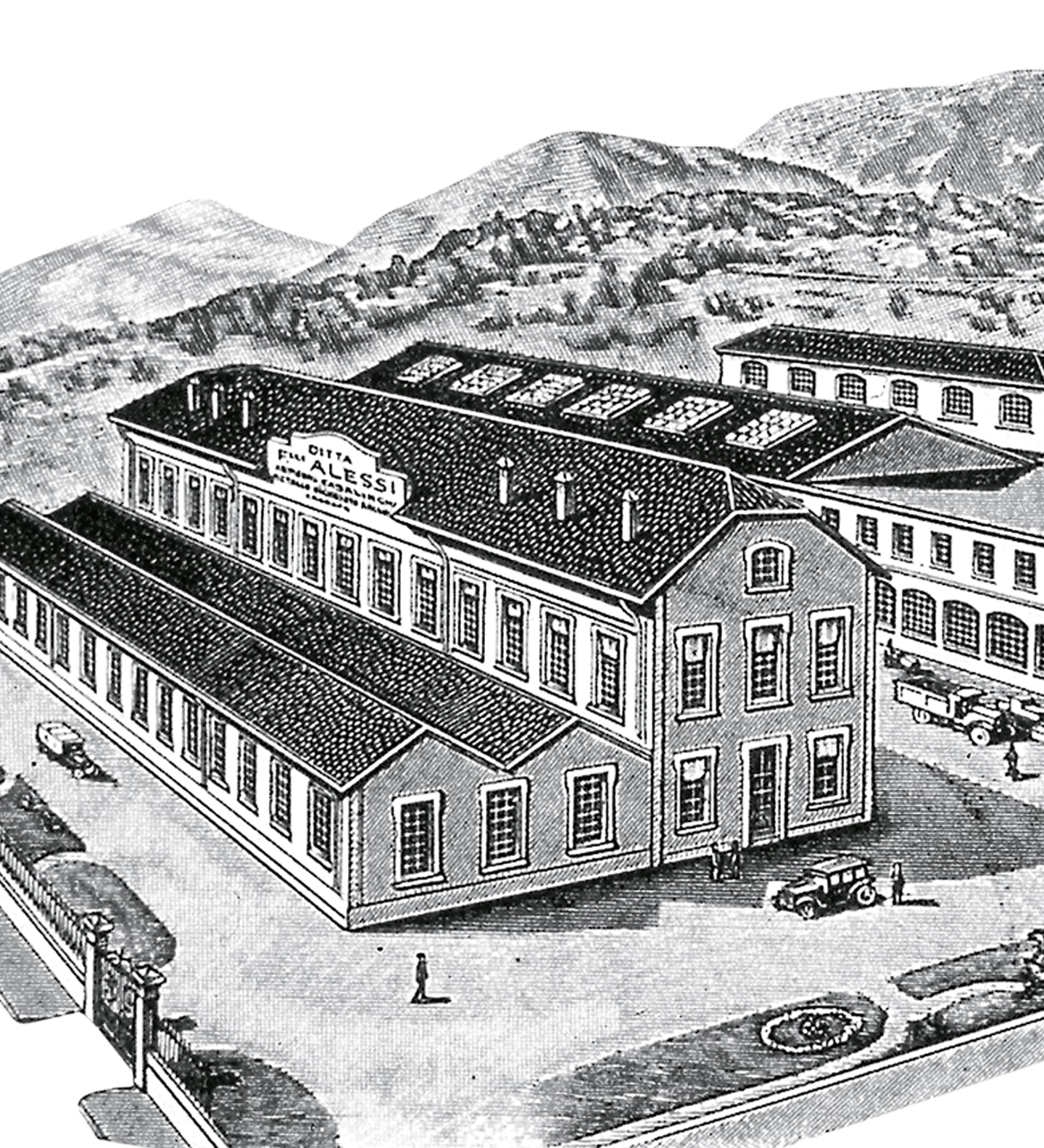
1920 -
Gli Inizi
Nel 1921, Giovanni Alessi e suo fratello fondarono la Fratelli Alessi Omegna - FAO, un “Laboratorio per la lavorazione di lastre di ottone e alpacca, con fonderia”. Le prime produzioni di FAO si ispirarono ai dettami dei più prestigiosi produttori di oggetti per la casa dei primi del Novecento, in particolare austriaci e inglesi. Giovanni era ossessionato dalla qualità e dall’artigianato di alto livello: i suoi prodotti in rame, ottone e alpacca, successivamente placcati in nichel, cromo o argento, divennero subito rinomati per la lavorazione meticolosa e la finitura perfetta.
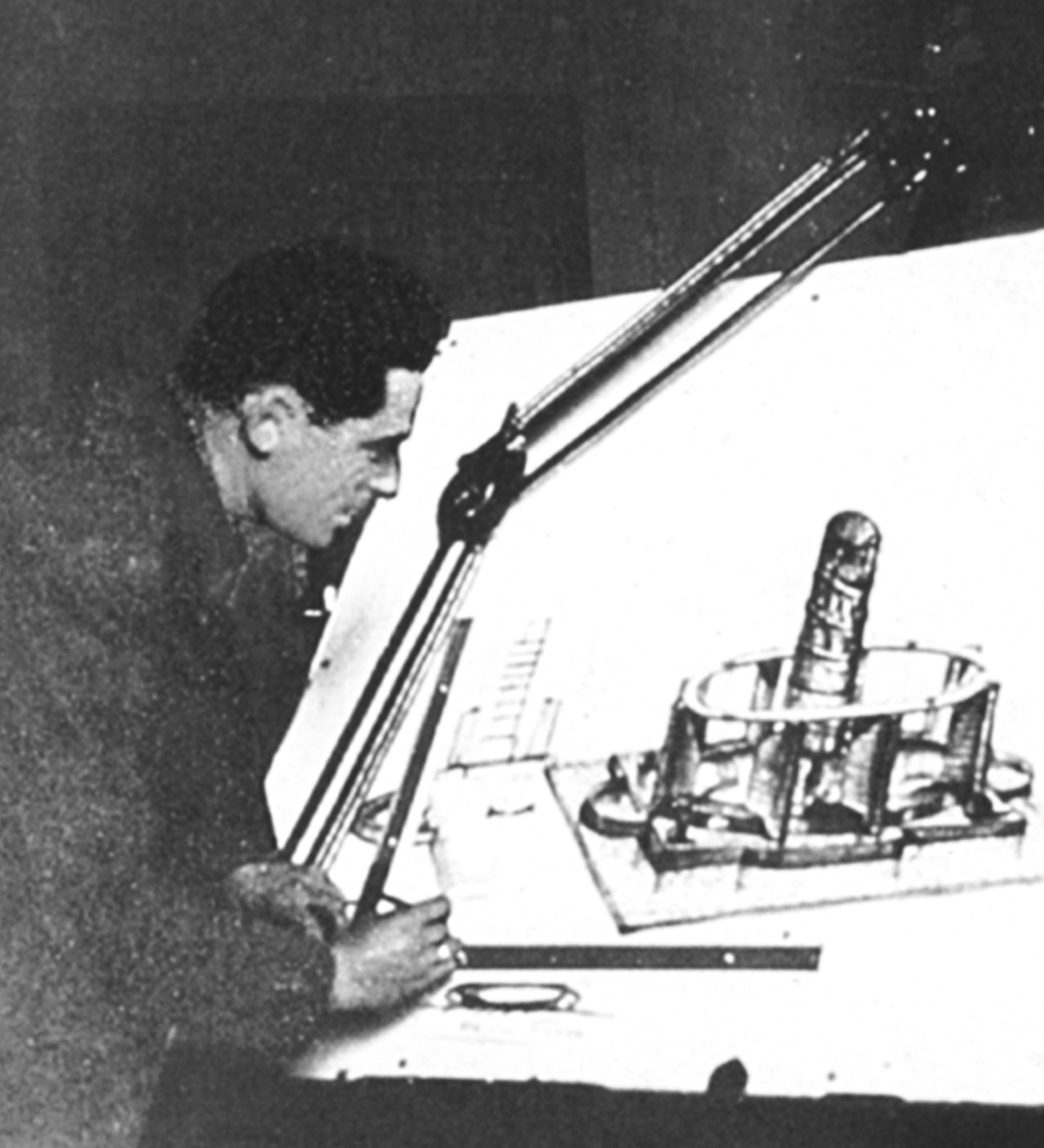
1930 -
Carlo Alessi
Nel 1932 Carlo Alessi, figlio maggiore di Giovanni, entrò nella ditta di famiglia ancora molto giovane, progettando la maggior parte degli oggetti realizzati tra la metà degli anni Trenta e il 1945. La crescita dell’azienda accelerò negli anni Trenta: aumentò il numero di addetti del reparto produzione e venne creata una prima rete di vendita. Grazie al talento progettuale di Carlo furono realizzati i primi prodotti originali e frutto di creatività autonoma. Alla fine del decennio questo promettente slancio fu fermato dal mutare delle condizioni politiche.
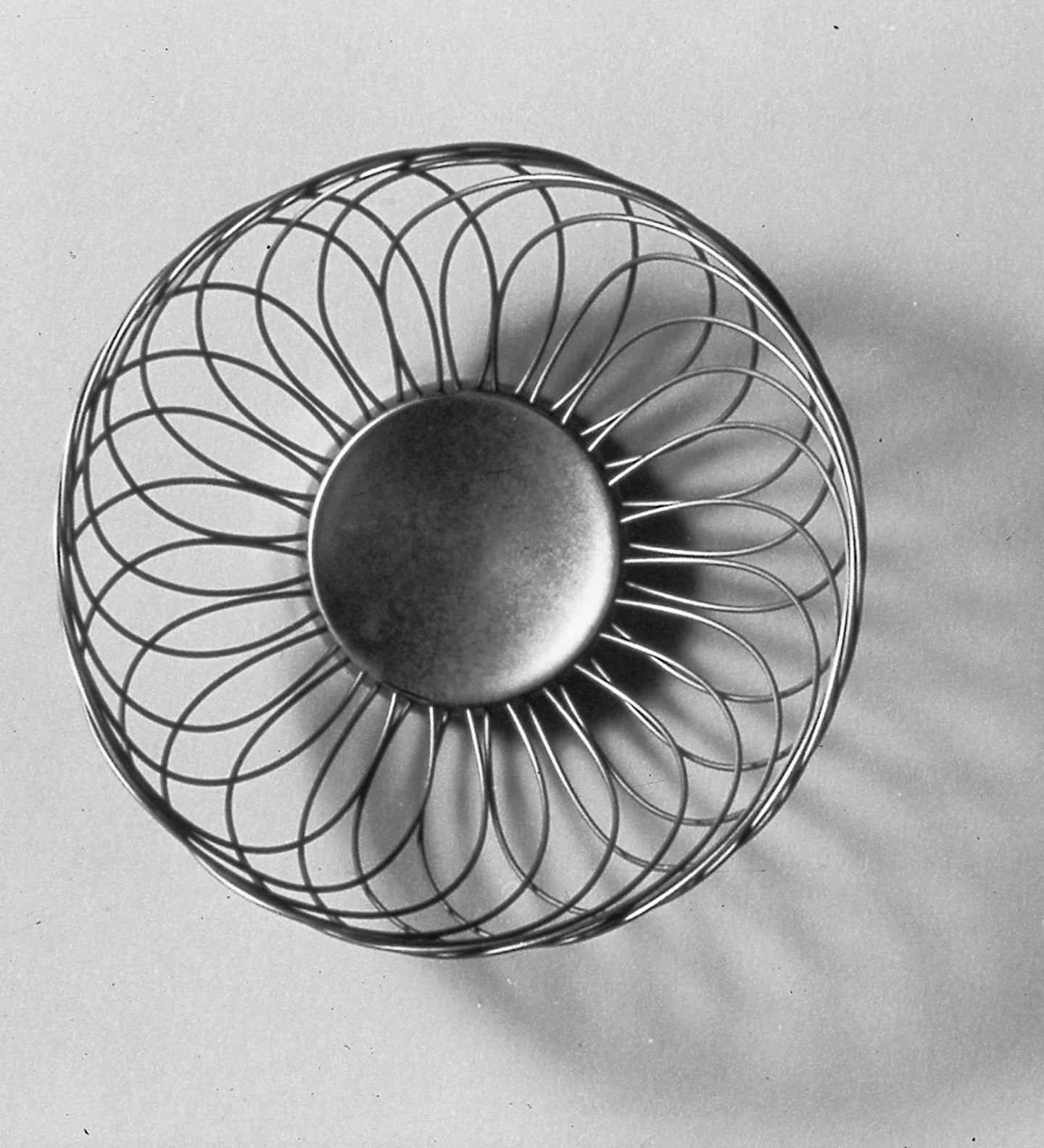
1940 -
La Guerra
Lo scoppio della Seconda Guerra Mondiale comportò che la Fratelli Alessi Omegna, come molte altre aziende italiane, fosse obbligata a dedicarsi all’industria bellica. Quando la guerra terminò e la FAO riprese l’attività, gettò le basi di quel processo di trasformazione che avrebbe portato l’azienda da una dimensione artigianale a una scala industriale. Inoltre, sviluppò un’immagine di prodotto molto più chiara, capace di competere con la creatività delle principali aziende del settore e di inserirsi nella nascente scena del design italiano.
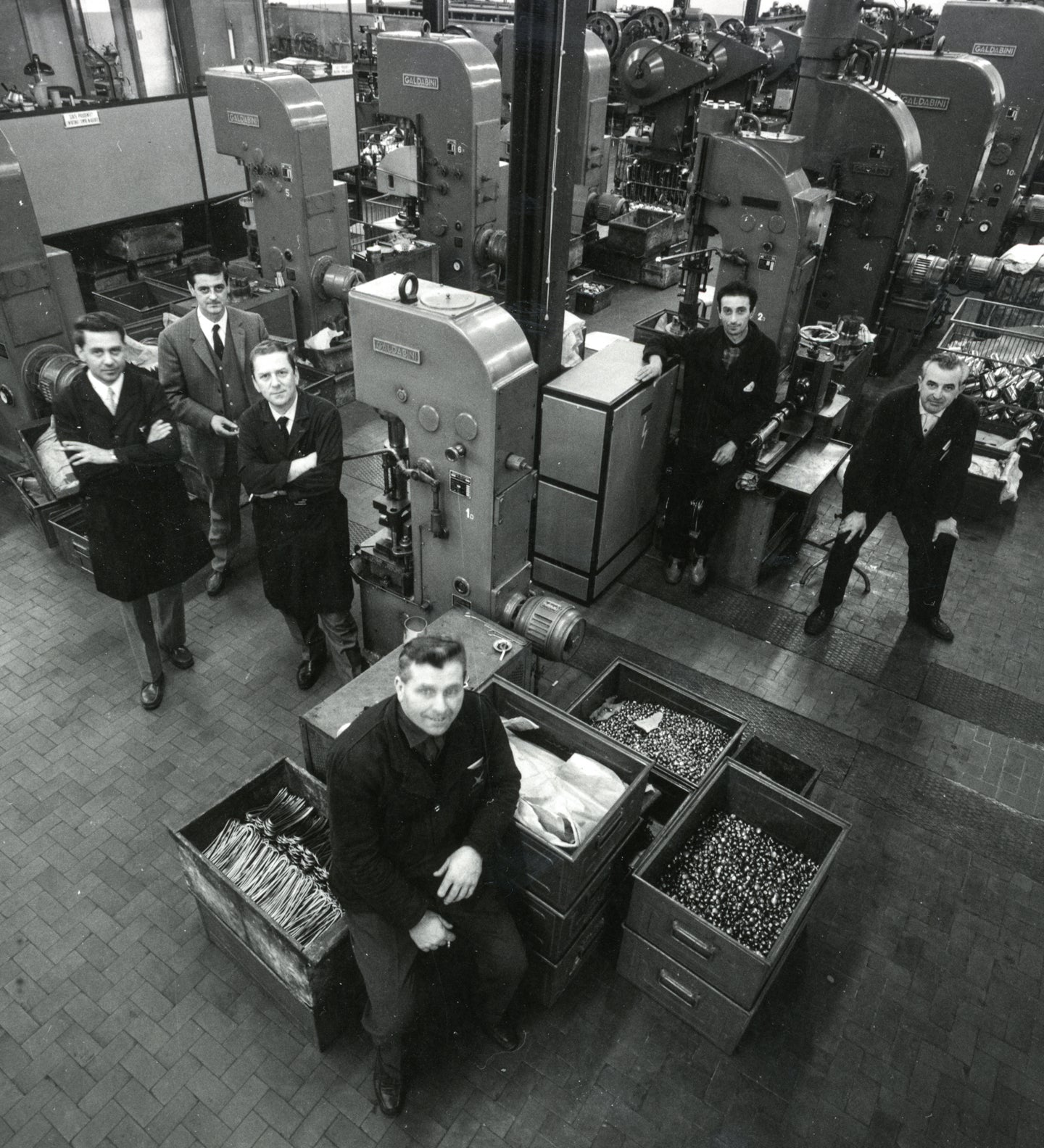
1950 -
Ettore Alessi
Negli anni Cinquanta l’azienda abbandonò gradualmente l’uso dei metalli teneri, sostituendoli con l’acciaio inossidabile, trasformando così la produzione da artigianale a industriale. Un segno del cambiamento fu il nuovo nome: ALFRA (ALessi FRAtelli). In questi anni l’azienda si specializzò nella produzione di oggetti per uso professionale (alberghi, ristoranti, bar, ecc.). Carlo Alessi, figlio maggiore del fondatore, subentrò al padre alla guida della società. Il fratello Ettore, entrato in azienda nel 1945, divenne responsabile dell’Ufficio Tecnico, consolidandone l’identità progettuale: fu in questo periodo che nacquero alcuni “tipi industriali” di prodotti come i cestini e le ciotole in filo d’acciaio. Sotto la sua guida ALFRA iniziò anche a collaborare con designer indipendenti.
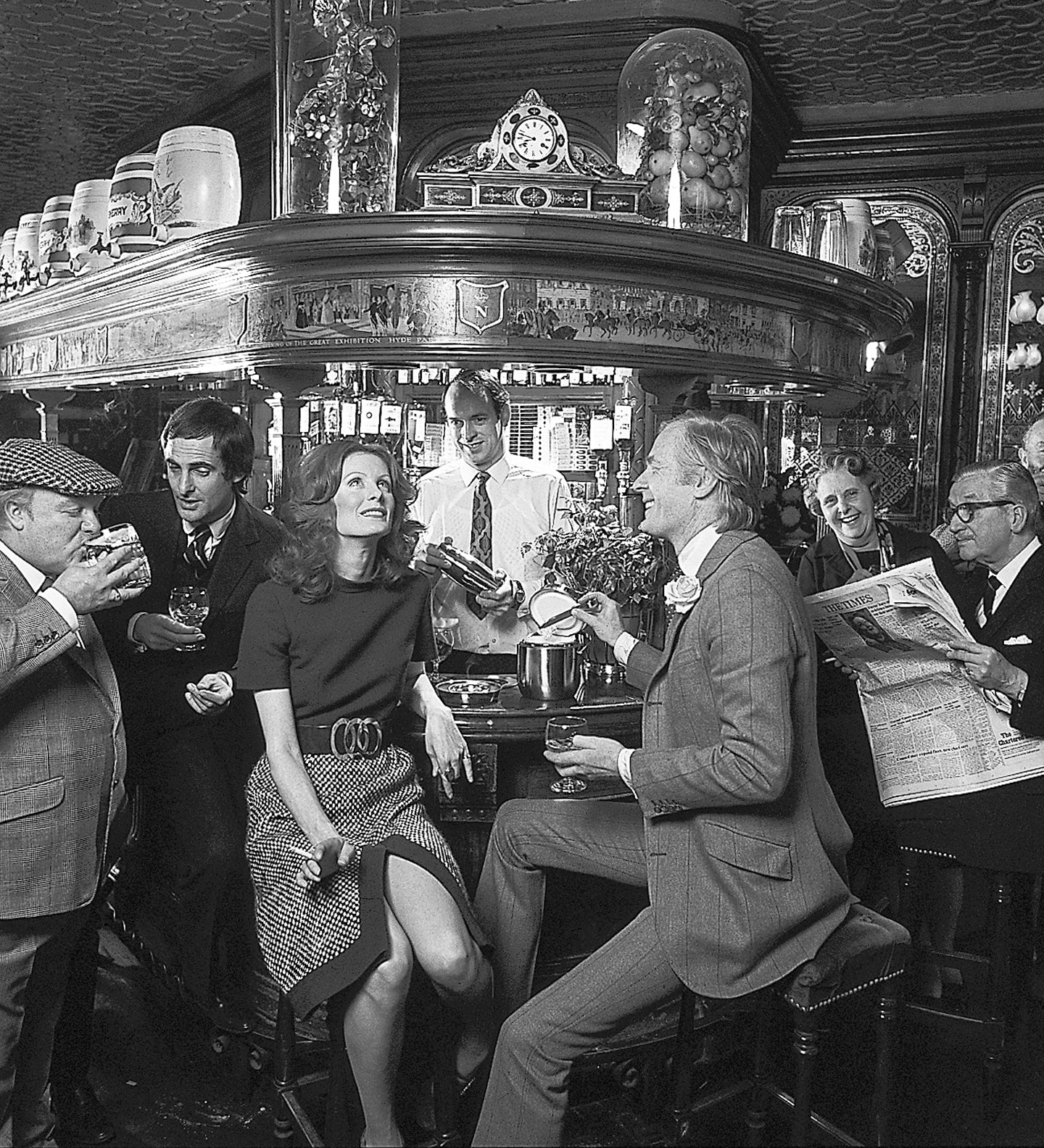
1960 -
Ceselleria Alessi
Negli anni Sessanta ai prodotti destinati al settore professionale si affiancò una collezione di oggetti per l’uso domestico. La linea “Ceselleria Alessi”, reinterpretazione degli stili della tradizionale argenteria, incontrò pienamente il gusto del tempo, diventando in breve dei veri best seller. Il mercato internazionale esplose e l’elevata qualità artigianale dei nuovi prodotti in acciaio lucido e satinato decretò il grande successo dell’azienda italiana. Ciò portò, nel 1964, all’assegnazione del prestigioso “Premio Mercurio d’Oro per l’Industria”, superando oltre 100 aziende concorrenti e conferendo ad Alessi la reputazione di una delle realtà più creative e intraprendenti del settore.

1970 -
I primi eroi del design
Nel 1970, Alberto Alessi, nipote del fondatore, entrò in azienda. I primi progetti da lui sviluppati furono una collezione di vassoi e cestini disegnata dal gruppo Exhibition Design, un sistema modulare per la tavola ideato da Franco Sargiani ed Ejia Helander, e Alessi d’Après. Alessi d’Après era un’operazione di ricerca per la produzione di “art multiples” che coinvolse, tra gli altri, Salvador Dalì: una chiara dichiarazione del desiderio di Alberto di realizzare oggetti non solo funzionali, ma capaci di soddisfare il bisogno di arte e poesia delle persone. Negli anni ’70, dopo questi progetti iniziali, le collaborazioni con Ettore Sottsass, Richard Sapper, Achille Castiglioni e Alessandro Mendini contribuirono a trasformare l’azienda nella Fabbrica del Design immaginata da Alberto.
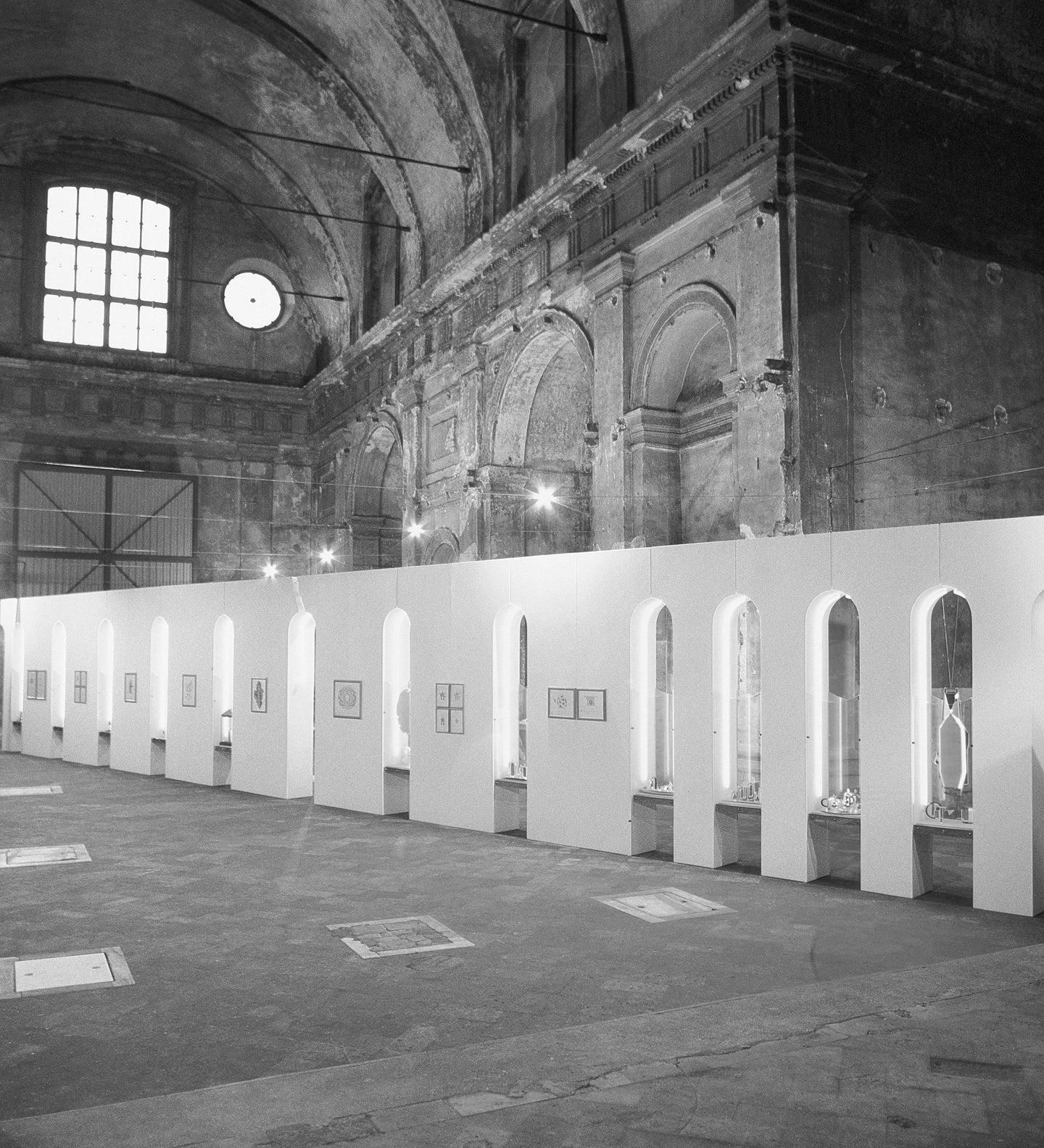
1980 -
Tea & Coffee Piazza
Nella prima metà degli anni ’80, la collaborazione con Alessandro Mendini diede il via all’operazione di ricerca denominata Tea & Coffee Piazza, finalizzata ad esplorare il mondo dell’architettura internazionale per individuare nuovi talenti in grado di rinnovare il linguaggio del design degli oggetti per la casa. Il tema proposto agli architetti coinvolti fu il “servizio da tè e caffè”. Presentati nel 1983, i risultati della ricerca Tea & Coffee Piazza furono un grande successo sia per il pubblico che per la critica, collocando Alessi saldamente tra le Fabbriche del Design italiano. L’operazione portò anche alla scoperta di due grandi nuovi designer: Aldo Rossi e Michael Graves.
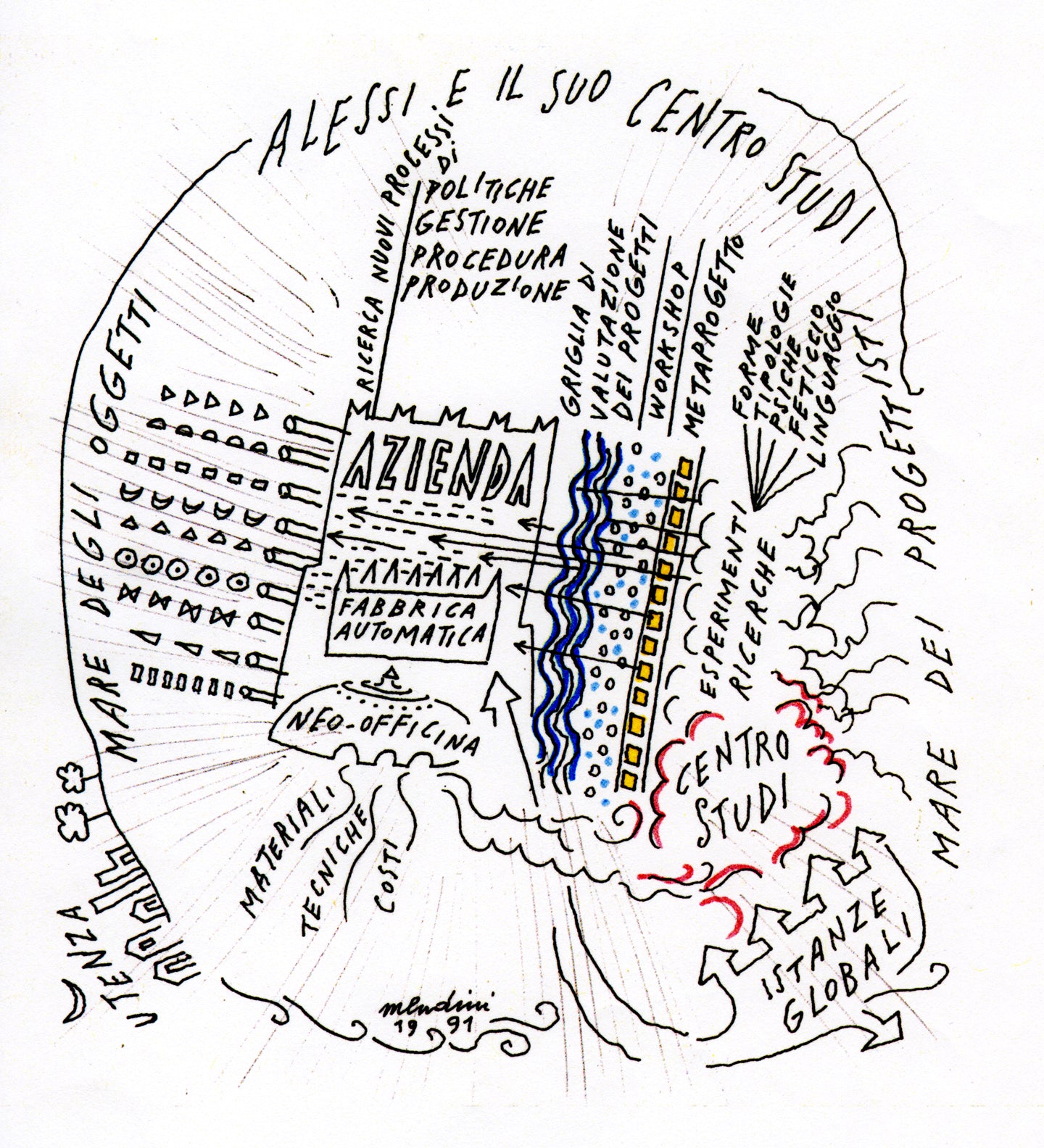
1990 -
Giovani designer e nuovi materiali
Il Centro Studi Alessi (CSA) aprì nei primi anni ’90 con una doppia missione: sviluppare contributi teorici su tematiche legate agli oggetti e coordinare il lavoro che l’azienda voleva avviare con giovani designer, non più solo quelli già affermati. La ricerca Alessi aprì le porte a nuovi linguaggi del design e nacquero alcuni degli icon-product dell’epoca, tra cui l’accendino Firebird di Guido Venturini e il contenitore Mary Biscuit di Stefano Giovannoni. Altri materiali furono introdotti in produzione accanto all’acciaio, quasi esclusivamente utilizzato fino ad allora. Il catalogo si arricchì di oggetti in legno, plastica, vetro, porcellana, ceramica, ecc… Il Museo Alessi aprì nel 1998.
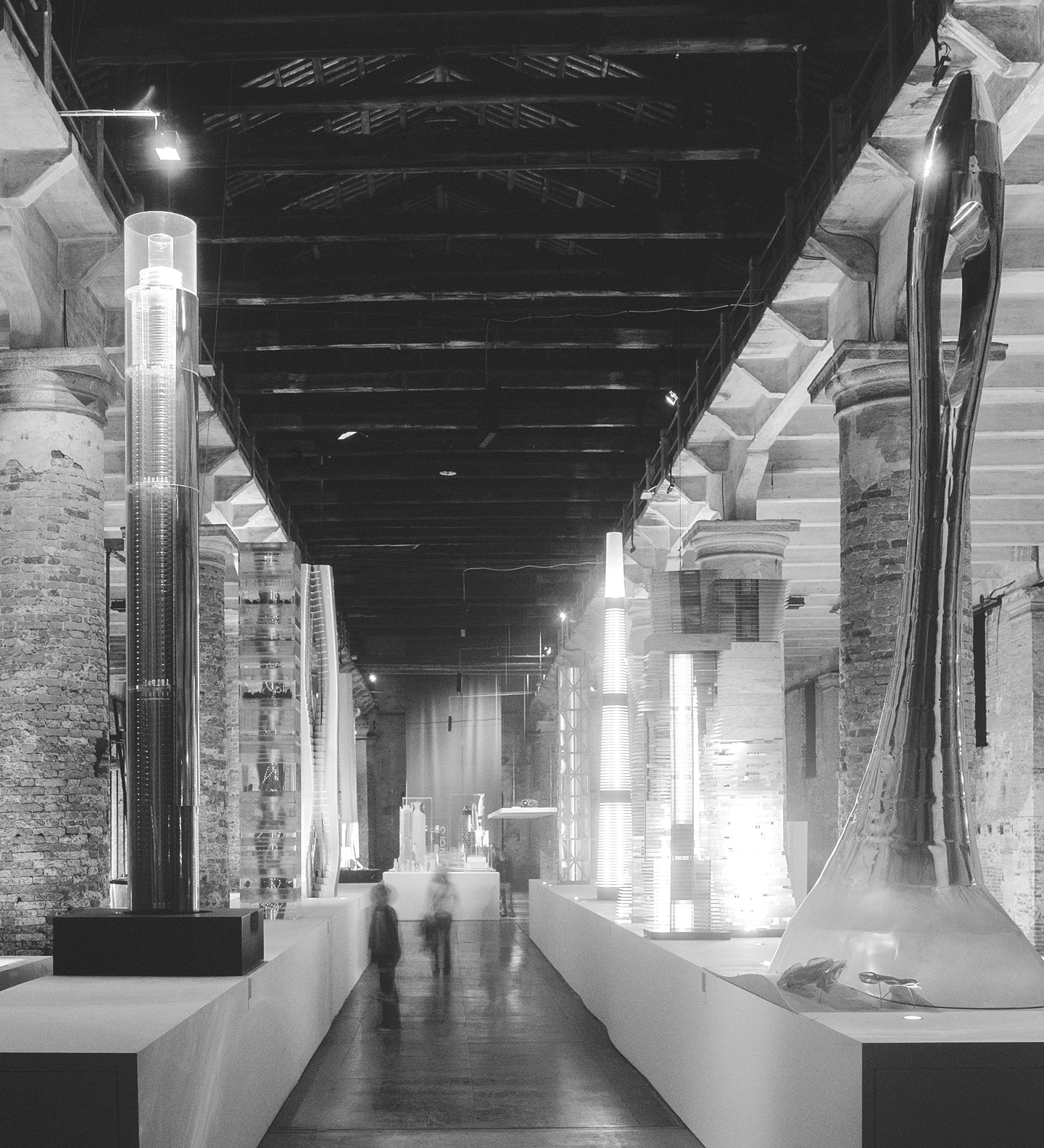
2000 -
Tea & Coffee Towers
L’operazione di design Tea & Coffee Towers inaugurò gli anni 2000, seguendo gli stessi presupposti teorici di Tea & Coffee Piazza, vent’anni dopo. Anche in questo caso, il tema proposto agli architetti fu il “servizio da tè e caffè”, riducendo le loro visioni progettuali su larga scala a una dimensione più piccola. L’operazione diede avvio a una nuova serie di collaborazioni, tra cui David Chipperfield, Doriana e Massimiliano Fuksas, Zaha Hadid e Toyo Ito, portando a piena maturità il carattere eclettico del catalogo Alessi. “Tutte le conoscenze e le espansioni dei cataloghi precedenti”, osserva Alessandro Mendini, “furono ulteriormente sviluppate, amplificate e reinterpretate con una dilatazione e proliferazione di prodotti mai sperimentata in precedenza nella storia di Alessi.” Nel 2000, Alessi avviò collaborazioni con aziende operanti in settori produttivi molto diversi dal proprio, offrendo grande esperienza nello sviluppo della ricerca nel campo del design.

2010 -
Etico & Radicale
La ricerca di Alessi nell’ultimo decennio si è sviluppata tra due punti, definiti da Alessandro Mendini come “etico” e “radicale”. “Etico”, inteso come propensione verso una nuova semplicità e un design austero. “Radicale”, invece, indica la ricerca di forme fortemente espressive e decorative. I progetti con impronta “radicale” (di Mendini o Marcel Wanders, per esempio) e quelli con tendenza etica (come quelli di Naoto Fukasawa o David Chipperfield) possono essere letti secondo questa dicotomia, nonostante la diversità dei loro linguaggi ci inviti a riflettere sulla relatività di questa classificazione. La distinzione tra “etico” e “radicale” è un tentativo parziale di definire la realtà molto più complessa del design come disciplina creativa artistica e poetica.

2020 -
Celebrazione del centenario
Con una mostra speciale al Salone del Mobile e 12 nuovi progetti, Alessi celebra cento anni di ricerca nel campo delle arti applicate e l’inizio di un nuovo secolo di sperimentazione.



